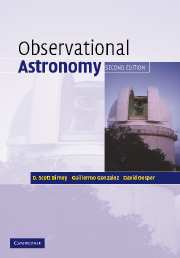 Free Speech
Free Speech
Does Leading Your Department & Co-Authoring a Peer-Reviewed Cambridge University Press Textbook Mean You’ve “Slowed Down”?
|
The The Chronicle of Higher Education began its recent article on Guillermo Gonzalez’s tenure case by admitting that Dr. Gonzalez “has amassed a better publication record than almost any other member of the astronomy faculty,” and that, “[a]t first glance, it seems like a clear-cut case of discrimination.” But the article was desperately looking for a way to attack Gonzalez. They managed to find one astronomer (who admitted he “has not studied Mr. Gonzalez’s work in detail and is not an expert on [Gonzalez’s] tenure case”) who was willing to make the argument that Dr. Gonzalez’s production has “slowed down considerably” at Iowa State University (ISU), alleging that “[i]t’s not clear that he started new things” since joining ISU. What an incredibly false pair of accusations against Dr. Gonzalez.
One of Dr. Gonzalez’s recent accomplishments at ISU that has received less attention is his co-authorship of a prestigiously published astronomy textbook, Observational Astronomy. Published by Cambridge University Press and also peer-reviewed, the textbook is used in Dr. Gonzalez’s own department to teach astronomy. Aside from his own department, universities internationally use Observational Astronomy, including University of Toronto, New Jersey’s Science & Technology University, University of Manitoba, Valparaiso University, and Franklin and Marshall College. Prestigious textbook authorship is a new avenue of scholarship for Dr. Gonzalez since he joined ISU. How can his critics sustain the claim that he has not “started new things” at ISU?
This is not Dr. Gonzalez’s only recent foray into textbooks. The concept of “galactic habitable zone,” a term that Science reported was “coined in 2001 by astronomer Guillermo Gonzalez” (Robert Irion, “Are Most Life-Friendly Stars Older Than the Sun?,” Science Vol. 303:27, 01/02/2004), is discussed in the latest edition of the college introductory astronomy textbook The Cosmic Perspective (Addison Wesley Publishing, 2007, 4th ed., pg. 723).
Another measure of a scientist’s productivity is the number of citations to his or her work by other scientists. As we recently reported, Guillermo Gonzalez has the highest normalized citation count among all astronomers in his department since 2001, the year he joined ISU. What makes this significant is that he leads his department in normalized citations even in recent years, such as 2006, the same year he published Observational Astronomy. To maintain that level of output shows he is working–and producing–very hard and very effectively. His work has not “slowed down considerably” since joining ISU. In fact, Dr. Gonzalez is making a larger individual impact upon his field, measured by normalized citation counts, than any other astronomer in his department since the year he joined ISU.
Perhaps next time the Chronicle of Higher Education will be able to find a foil who actually has “studied Mr. Gonzalez’s work in detail” so they aren’t embarrassed by such baseless comments.

